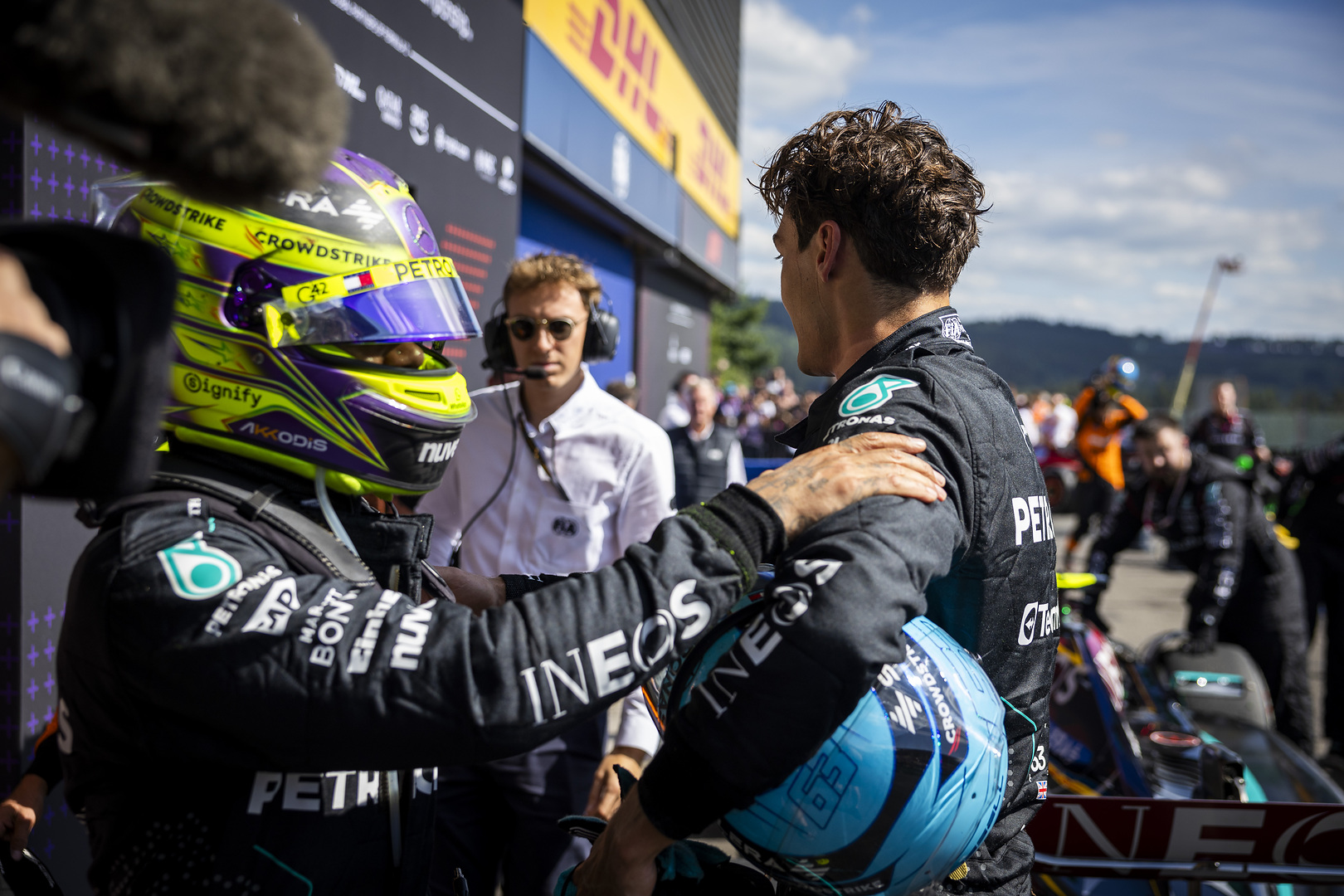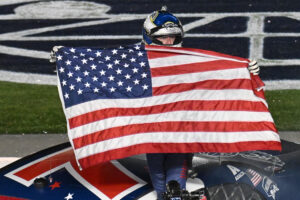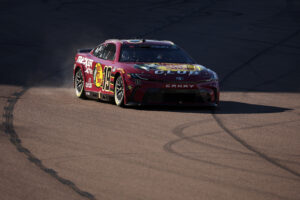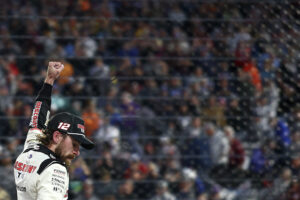George Russell Winning the Belgian Grand Prix only to lose it at the same time isn’t the first situation of its kind in Formula 1.
George Russell had a fantastic race where he decided his own strategy which led him to win the famous Belgian Grand Prix at Spa. Following mandatory checks after the race, his car was found under the weight limit. As a result, he was disqualified from the race, cutting short his feeling of victory. Russell’s disqualification allowed his teammate Lewis Hamilton to inherit the victory.
But this is not the first time in Formula One history where a driver has been disqualified after a race. History states that each and every one of those drivers were world champions or would do so in the following years.
The Price of Glory: F1 Legends Who Had Their Wins Overturned
James Hunt | 1976 | British Grand Prix
James Hunt was disqualified as he did not finish a full lap following a red flag in the race.
The 1976 British Grand Grid has a story of its own. The red flag was caused due to Hunt’s devastating first-corner crash. Hunt ultimately fell short of finishing a full lap when he took a shortcut to return to the pits.
Officials initially decided to prevent him from restarting because he wasn’t on the track when the red flag was waved. However, the anger from die-hard British fans compelled the stewards to allow him to start again.
Hunt then went on to win the race after the re-start but three teams, namely Ferrari, Tyrrell and Fittipaldi, immediately protested the victory. After a long two-month discussion, officials stripped Hunt of his victory at Silverstone, and they awarded the win to Championship contender Niki Lauda.
James Hunt | 1976 | Spanish Grand Prix
The British Grand Prix was not the only race from which Hunt was disqualified. He was also disqualified from the Spanish Grand Prix during that same race year. After winning the Spanish Grand Prix, the officials ruled that his McLaren was too wide, and he was almost instantly stripped of his victory.
But the disqualification didn’t stay for long as McLaren said the extra width was caused by the expansion of hot tyres. As a result, McLaren was able to restore Hunt’s victory.
Nelson Piquet | 1982 | Brazilian Grand Prix
Nelson Piquet was disqualified from the Brazilian Grand Prix after his car was under the minimum weight limit.
The 1982 Brazilian Grand Prix witnessed Piquet push his car past the finish line in the first place. But Ricciardo Patrese, his Brabham teammate, retired from the race due to heat exhaustion. After celebrating his victory and passing out on the podium, officials later declared him ineligible for the win.
Why? It was discovered that Piquet and Keke Rosberg were underweight as a result of a “ballast water tank”. The stated tank was to cool the brakes, but the teams frequently filled the empty tanks after the race to comply with the weight requirements and pass the post-race inspections.
Both Piquet and Rosberg were eventually caught and their first and second-place finishes were stripped.
Alain Prost | 1985 | San Mario Grand Prix
Although Alain Prost won the race, the car was 2 kilograms underweight when it was weighed after the race. Tim Wright, his engineer, revealed to Autosport that although the team had planned for the car to be as light as possible, they had neglected to account for the extra tyre wear or the fluid use. Wright described it as a “simple miscalculation.”
Prost was disqualified and Elio de Angelis was declared the winner.
Ayrton Senna | 1989 | Japanese Grand Prix
Throughout Formula One’s history, the 1989 Japanese Grand Prix will arguably be one of the most controversial races. Both Ayrton Senna and Alain Prost, who race for McLaren, touched at the last chicane on lap 47. Both cars stopped on track and Prost jumped out of his McLaren. But Senna was not ready to give up on his race yet.
Senna was somehow able to restart his engine when he signalled up to the marshals to push along an escape road. After making his way off the escape road, he returned to the pits and was given a nose. He was able to re-join the track and he overtook Alessandro Nannini to take the lead in the race and win it.
Senna was disqualified right away for two reasons. Firstly, he didn’t see the chicane after colliding with Prost, and secondly, he got outside assistance to restart his car. Senna received a six-month race ban, and the authorities fined McLaren a whopping $100,000 for their unsuccessful attempt to dispute the disqualification.
Michael Schumacher | 1994 | Belgian Grand Prix
A wooden skid block called a skid block was placed beneath each F1 car. This was in order to add ride height and lessen the effect of ground effect.
The regulations required the blocks to withstand a maximum of 1mm of wear. Exceeding this limit would grant an illegal advantage. Michael Schumacher was instantly disqualified as a result, yet he went on to win his first Championship with Benetton.
Sebastian Vettel | 2021 | Hungarian Grand Prix
Sebastian Vettel was disqualified from his second-place finish at Hungaroring after officials were unable to get the necessary fuel samples after the race.
The officials were able to remove 0.3 litres of fuel from Vettel’s Aston Martin following the race. However, the technical requirements mandated that officials take a 1.0-litre fuel sample from the car at any point during the event.
Lewis Hamilton inherited second place, and Ferrari’s Carlos Sainz received third place.






